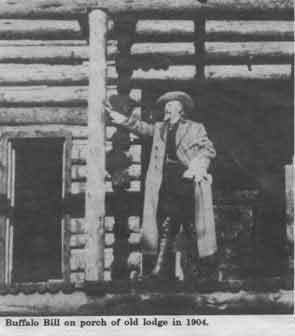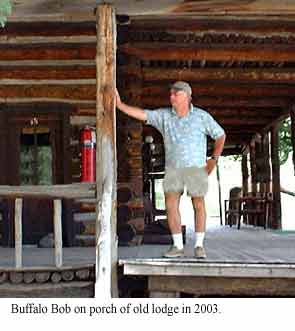The Adventures of Platy and the Gang

|
2003 Volume 10
|

|

|
2003 Volume 10
|

|
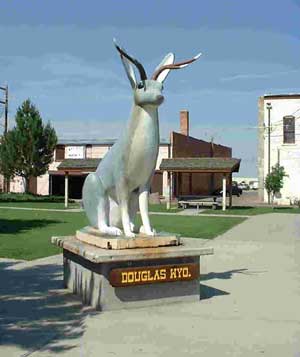
On the way to Casper, we had to stop in Douglas, WY. It claims to be the official home of the Jackalope.
The Jackalope is perhaps the rarest animal in North America. The strange little fellow defies classification. Were it not for the horns it might be a large rabbit. Were it not for its shape and coloring it might be a species of deer. It is not vicious usually, although coyotes have a fine respect for the sharp menace of its horns. The first white man to see this singular fauna specimen was a trapper named Roy Ball in 1829. When he told of it later he was promptly denounced as a liar. An odd trait of the Jackalope is its ability to imitate the human voice. Cowboys singing to their herds at night have been startled to hear their lonesome melodies repeated faithfully from some nearby hillside. The phantom echo comes from the throat of some Jackalope. They only sing on dark nights just before a thunderstorm. Stories that they sometimes get together and sing in chorus is discounted by those who know them best.
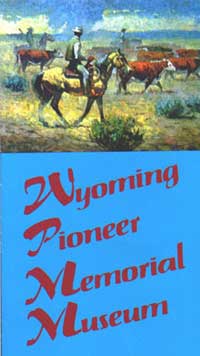
They also had two museums that we visited. One had a display of train engines and cars. I think that the one passenger car they had was the one the I was on in 1959? when we went from Hamilton to Chicago on our way to California.
The other museum is a large collection of historical materials relating to westward expansion.
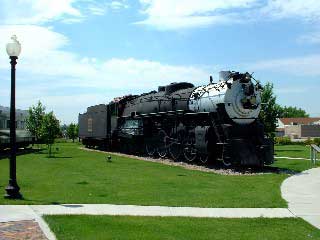
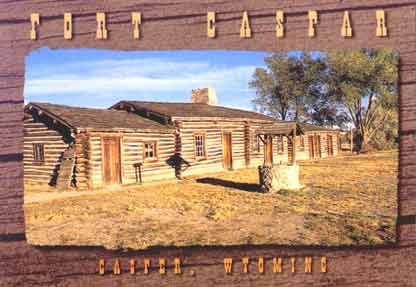 We visited Fort Caspar. It is the military establishment first called Platte Bridge Station, where it gained its history during the days of mountain fur trade and a place for fording the North Platte River.
The fort was named for Lt. Caspar Collins who was killed while trying to rescue a wounded soldier after being attacked by the Sioux and Cheyenne just across the bridge. Since there was already a Fort Collins named after his father, they used his first name.
The city of Casper gained its name from the fort and frontier misspellings replaced the a with an e.
We visited Fort Caspar. It is the military establishment first called Platte Bridge Station, where it gained its history during the days of mountain fur trade and a place for fording the North Platte River.
The fort was named for Lt. Caspar Collins who was killed while trying to rescue a wounded soldier after being attacked by the Sioux and Cheyenne just across the bridge. Since there was already a Fort Collins named after his father, they used his first name.
The city of Casper gained its name from the fort and frontier misspellings replaced the a with an e.
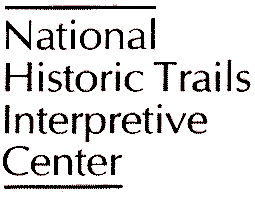
|
The National Historic Trails Interpretive Center is built on a sand dune overlooking the city of Casper and the valley of the North Platte River. The Center interprets the story of the emigrants traveling along the Oregon, Mormon, California and Pony Express Trails in the 1880's.
|

|
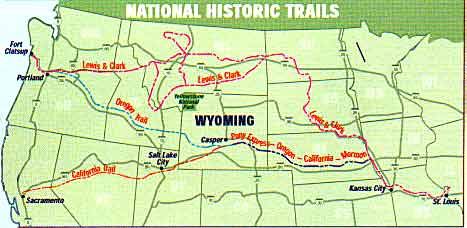
All of these trails followed along the south side of the North Platte River and crossed at the Fort here. Further west they split and went either to Sacramento, Oregon, or Salt Lake City.

|
Judy tried her hand at pushing a cart like the Mormons did. She says carrying her pack is easier. |
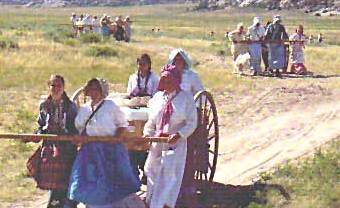
|
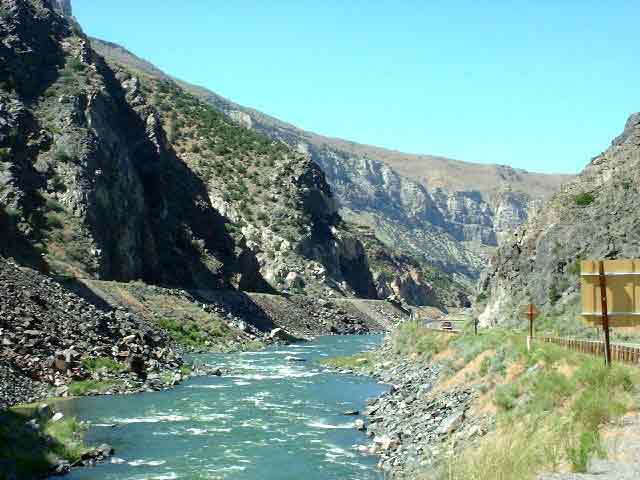
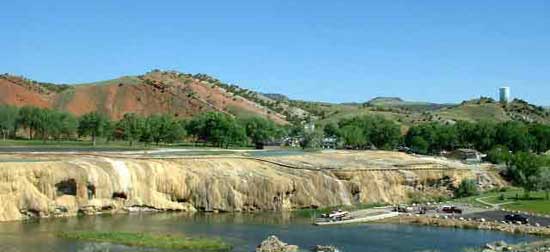
This is a picture of the mineral deposits left behind when the water runs over the cliffs. To get an idea of the size those are cars launching boats below the cliffs.

|
The Wyoming Dinosaur Center is a really nice museum. The displays are easy to understand and they have a large number of life size dinosaur mounts. 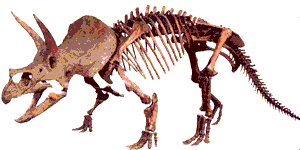 |
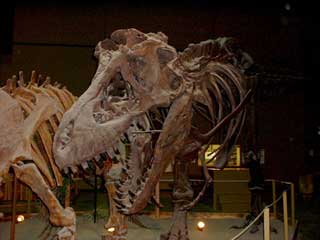
They have a tyrantasaurus rex named "Stan". Does he look like a Stan to you?
The Dancing Bear Folk Center actually is four museums in one. There is the American West Wax Museum, The Lawrence Barbed Wire Collection, The Quilting Bee Textile Collection, and the Teddy Bear Museum. This is a picture of Butch Cassidy and the "Hole in the Wall Gang". |
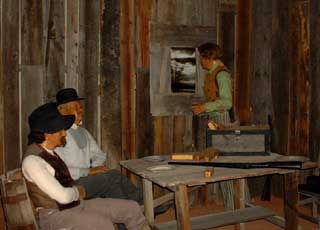
|
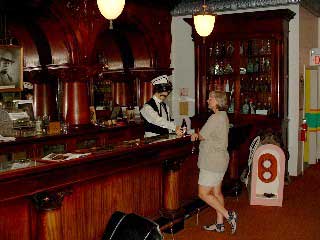
 When we left Thermopolis it was a short drive to Cody, Wyoming. Like everything else around here it's named after Buffalo Bill.
We were impressed with the Buffalo Bill Historic Center. It's actually 5 museums in a large complex (over 300,000 square feet) that is called the 'Smithsonian of the West'.
It includes:
When we left Thermopolis it was a short drive to Cody, Wyoming. Like everything else around here it's named after Buffalo Bill.
We were impressed with the Buffalo Bill Historic Center. It's actually 5 museums in a large complex (over 300,000 square feet) that is called the 'Smithsonian of the West'.
It includes:
 We had lunch in the Irma Hotel, built by Buffalo Bill in 1902. I had buffalo lasagna.
We had lunch in the Irma Hotel, built by Buffalo Bill in 1902. I had buffalo lasagna.


